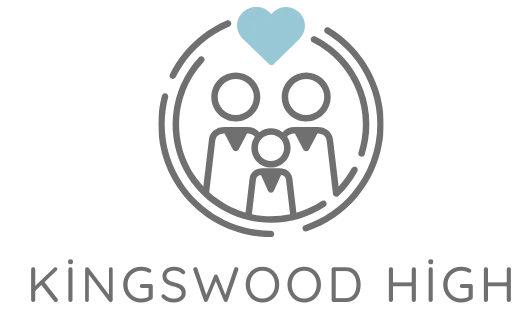Table of Contents
ToggleIn today’s digital jungle, apps are like the wild animals that roam freely on our devices. While they promise convenience and entertainment, they can also become time-sucking black holes if left unchecked. Ever found yourself scrolling through social media for hours, only to realize you’ve turned into a couch potato? That’s where app usage monitoring swoops in like a superhero, ready to save the day.
Imagine having a trusty sidekick that tracks your app habits and helps you reclaim your time. With the right monitoring tools, you can discover which apps are stealing your focus and which ones are actually boosting your productivity. It’s time to take control of your digital life and turn those pesky distractions into productive powerhouses. Let’s dive into the world of app usage monitoring and unlock the secrets to a balanced, tech-savvy lifestyle.
Overview of App Usage Monitoring
App usage monitoring serves as a tool for individuals aiming to track and analyze their app interactions. It promotes a mindful approach to digital consumption, offering insights into time spent on various applications.
Importance of Tracking App Usage
Tracking app usage is essential for understanding personal habits. Individuals can discover which apps capture attention the most and identify time drains. Highlighting time spent on social media or games reveals potential distractions. By recognizing these patterns, users take informed steps to adjust their app usage. Monitoring helps prevent excessive scrolling and promotes healthier digital habits, ultimately leading to a more productive lifestyle.
Benefits for Users and Developers
Users reap multiple benefits from app usage monitoring. They gain clarity on which applications contribute to productivity and which do not. Personalized experiences enhance user engagement and satisfaction. For developers, this data proves invaluable. Insights into user behavior inform better design decisions. Improved app performance results from understanding which features resonate with users. Enhanced feedback loops foster innovation, ensuring apps meet evolving needs effectively. Overall, monitoring app usage leads to a win-win scenario for both users and developers.
Key Features of App Usage Monitoring Tools

App usage monitoring tools offer crucial insights to enhance digital consumption. These features help users make informed decisions about their app interactions.
Usage Statistics and Analytics
Usage statistics provide a detailed overview of app interaction patterns. Users can track time spent on each application, identifying which ones consume their attention. Analytics reveal peak usage times, allowing users to adjust their habits accordingly. Additionally, data trends over days or weeks illustrate any shift in usage patterns. Timely alerts for excessive use often prompt users to reassess their strategies and minimize distractions.
User Engagement Metrics
User engagement metrics gauge how involved individuals are with their applications. Metrics include session length, frequency of use, and retention rates. Understanding these factors helps users recognize which apps provide genuine value. Continuous engagement with specific apps signals their importance in daily routines. Reviewing these metrics encourages users to prioritize productive apps while decreasing time spent on less beneficial alternatives.
Popular App Usage Monitoring Tools
Monitoring app usage effectively enhances digital habits. Several tools stand out for their capabilities and features.
Comparative Overview of Top Tools
Various app usage monitoring tools cater to different needs. RescueTime offers real-time tracking, allowing users to see their productivity levels instantly. Toggl emphasizes seamless time tracking with easy project organization. Moment focuses on daily usage limits, prompting users to reduce screen time. Forest gamifies productivity, encouraging users to stay focused by planting virtual trees that grow while they avoid distractions. Each tool provides unique benefits tailored to specific user preferences and goals.
Unique Features of Each Tool
Unique features set these tools apart. RescueTime generates detailed reports, highlighting areas for improvement in productivity. Toggl enables straightforward time entry with intuitive interfaces, facilitating quick adjustments. Moment includes weekly usage summaries, offering insights into growth and awareness. Forest introduces a social element, allowing users to compete with friends, fostering accountability. These distinct offerings empower users to choose tools that align best with their monitoring needs and lifestyle preferences.
Challenges in App Usage Monitoring
Monitoring app usage presents unique challenges that users must navigate to maximize benefits. Two significant challenges are privacy concerns and data accuracy.
Privacy Concerns
Privacy issues arise when monitoring tools collect personal data from users. Many applications require access to sensitive information, which can lead to data breaches if not properly handled. Users often worry about how their data will be used and who will have access to it. Ensuring that apps comply with privacy regulations, such as GDPR, is crucial. Transparency from developers regarding data collection and usage builds trust with users. Effective privacy management fosters a safer environment for individuals using these monitoring tools.
Data Accuracy and Reliability
Reliability of the data collected can significantly affect the effectiveness of app usage monitoring. Inaccurate tracking of app interactions can mislead users about their habits. Some tools may not account for multitasking or background app usage, skewing data. Regular updates to the monitoring software can enhance accuracy and reliability over time. Users must choose trusted tools with consistent performance and robust data validation methods. Accurate insights into app usage shape informed decisions, enabling users to adjust their habits effectively.
Future Trends in App Usage Monitoring
Emerging trends in app usage monitoring reflect advancements that enhance user experience and data analysis. Innovations like artificial intelligence (AI) facilitate personalized usage insights, allowing users to receive tailored recommendations. Machine learning algorithms analyze behavioral patterns, identifying distracting applications with greater accuracy. Additionally, integration of wearable devices with monitoring software offers real-time feedback on app interactions, promoting instant awareness of usage habits.
Predictions for the app usage monitoring industry show rapid growth driven by increasing demand for digital well-being. Analysts estimate the market for monitoring tools could reach $4 billion by 2025. This expansion will likely feature improved analytics tools that empower users to track not only app usage but also its impact on overall productivity. Privacy-centered features are expected to increase in importance, ensuring user trust and compliance with regulations. Enhanced cross-platform functionality will allow users to monitor app usage seamlessly across devices, further broadening the appeal of monitoring solutions.
App usage monitoring stands as a vital tool for anyone seeking to enhance their digital habits. By providing insights into app interactions it empowers users to make informed decisions about their time. This awareness not only helps in identifying distractions but also promotes the use of applications that genuinely contribute to productivity.
As technology continues to evolve so will the tools available for monitoring app usage. The integration of advanced analytics and AI will likely offer even deeper insights into personal habits. Embracing these tools can lead to a more balanced and fulfilling digital experience. Ultimately it’s about taking control and ensuring that technology serves to enhance rather than detract from daily life.







